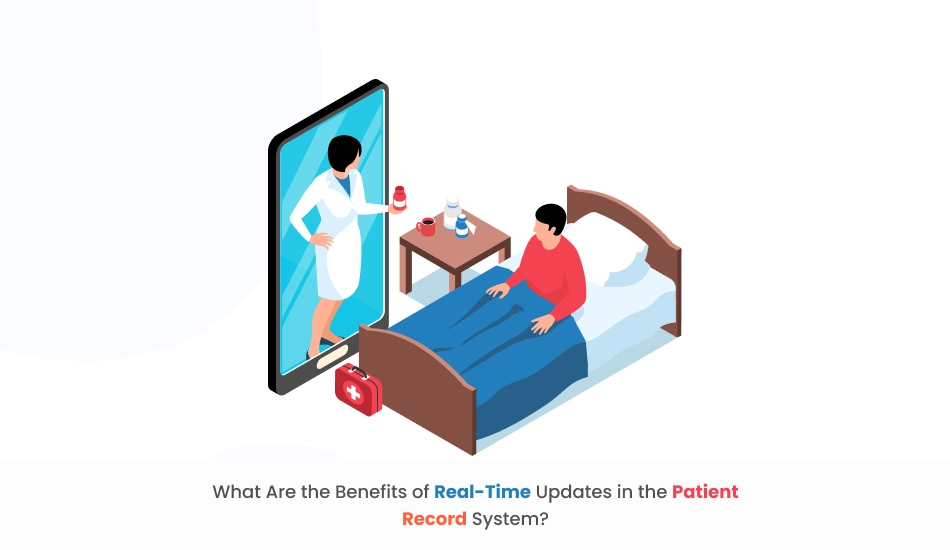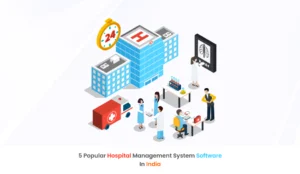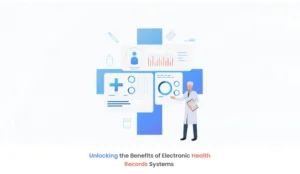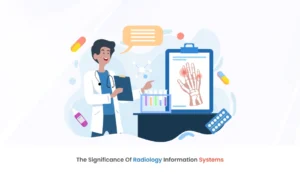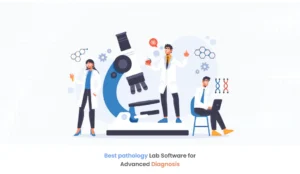Quick Summary
Computerized system to store vast information for simplifying patient’s treatment. It comprises patient’s health information with their demographic details. Moreover, the electronic medical record system accumulates real-time information in a single place, where it is easy to retrieve data whenever required. Patients have their healthcare database for saving entire medical information from registration forms to medical bills.
Introduction
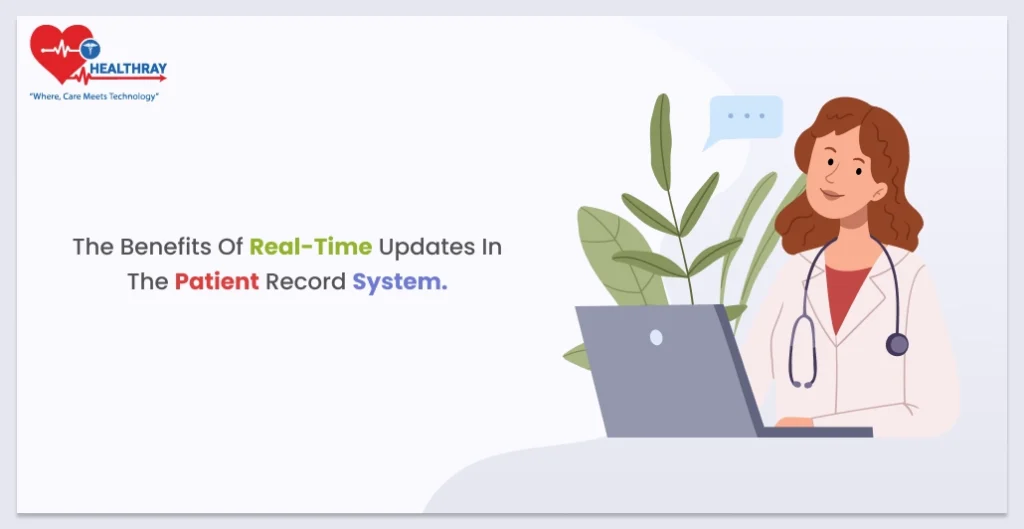
Electronic medical records are a digital system, designed to simplify the hospital’s operational work. Incorporates numerous departments such as the patient handling department, medical billing department, operational department, laboratory information department, and radiology information department.
EMR handles these departments effectively. The patient handling department maintains a patient record system and regularly updates their health activities. It has been observed that if a hospital records patient information effectively, half of their treatment planning is already being done.
A patient record system includes various steps such as collecting data from several sources, organizing data in a systematic legitimate format, updating records with real-time information, and generating patient medical reports with graphical visuals. These reports can be shared from anywhere and able to receive medical advice from any location.
What is the Patient Record System?
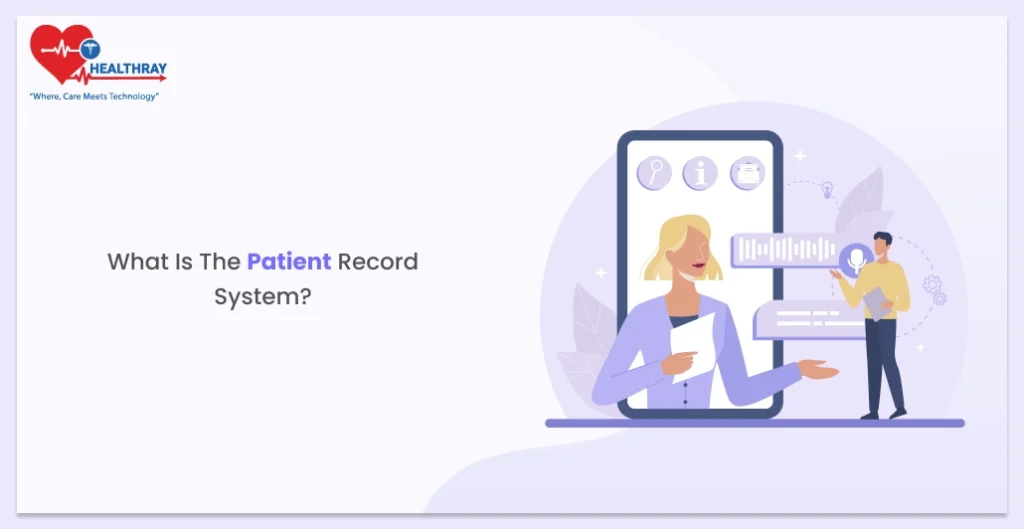
Patient Record System assimilates information from external and internal sources. Internal sources contain prescription reports, radiology reports, allergy information, patient’s medical history and treatment plan, and diagnosis reports.
On the other hand, external sources mean capturing the patient’s medical records from outside the hospital such as pharmacy bills, consultation records, and detailed patient’s insurance information. All this information is in one system. Can’t it be amazing? If you want best AI-enabled EMR systems in your hospital, advice to embrace Healthray, the leading software for enhancing patient care.
This electronic patient record has countless benefits such as eliminating paper documentation, removing ambiguity, reducing redundancy, minimizing duplication efforts, and lowering medication errors. Consequently, ease in maintaining patient healthcare routine through consistent medication reminders.
Role of Electronic Health Records in Eliminating Medical Errors
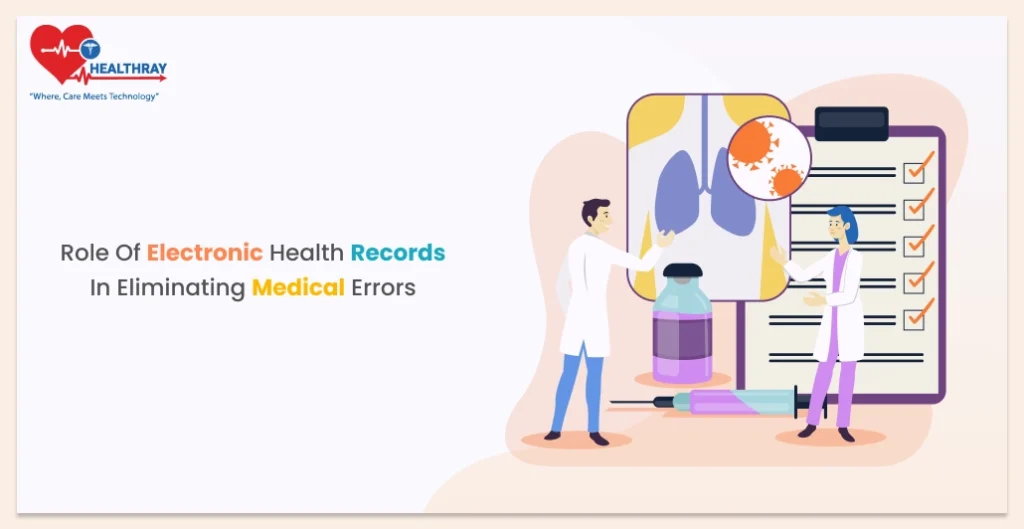
Electronic health record systems have the potency to assimilate and generate medical reports. It addresses many health care challenges such as compliance with legal rules, managing patient records in a defined manner, difficulty in taking patient follow-up, and delays in the insurance claim process. The electronic medical record offers numerous ways to eliminate medical errors such as :
Digital medical documents :
- Health information technology reforms healthcare delivery. Mainly, it affects the display of medical records. Formerly, it is displayed in paper format, and in the current era, it is depicted in digital format.
- Every individual knows the ultimate power of digital technology. Therefore, patients have desired to embrace advanced healthcare technology for simplifying medical procedures.
- Digital medical documents have numerous advantages such as eliminating paper-based records, accessing medical information to other healthcare professionals, eradicating stationary costs, reducing storage expenses, and ease in retrieving any medical and patient documents within a few clicks.
Patient records management :
- Patient records management refers to centralizing patient records for efficient treatment plans and enhancing patient quality care.
- Not only records patient information, but it also facilitates timely medication reminders, maintains digital coordination with insurance policies, and streamlines communication with healthcare professionals.
- It has numerous advantages such as simplifying clamming procedures, preparing medical financial budgeting, minimizing health care risks, contributing to patient medical research, and significantly, improving their mental health.
Administrative management :
- In healthcare organizations, it is predominant to smoothly conduct administrative activities as it is a substantial part of a hospital.
- It includes various activities including, scheduling staff activities, monitoring patient performance, managing medical financial resources, and handling patient queries.
- Administrative managers have many responsibilities towards healthcare organizations such as identifying hospital goals and formulating healthcare strategies to reduce medical expenses.
- Administrative management has many advantages such as lower hospital expenses, improved staff communication, and aids in achieving the hospital’s objective.
Virtual Medical Assistant :
Patients and healthcare professionals can visualize any patient’s medical records from any location. Also, they can advise them remotely. Let’s delve into the virtual healthcare services facilitated by hospital management system :
- Sharing medical documents
- Managing appointments remotely
- Virtual patient monitoring
- Remote consultation
- Virtual prescriptions.
Step towards digital era with our healthcare solution
Revamp your hospital facilities and embrace change for better healthcare management. Ease in managing and organizing large medical datasets leads to effective analysis. Seize the opportunity now!
Primary care management :
- Primary care physicians are the first choice of each patient. Moreover, patients are more close to them and comfortable sharing their private problems.
- Management of primary clinics that provide numerous healthcare services such as treating colds and common fevers, advice on healthcare routine activities, and continuous monitoring of chronic disease.
- Primary care physicians have recurring patients. It is difficult to maintain individual patient records.Therefore, it is required to incorporate patient records management for better patient care.
- Electronic health record maintains proper patient records with other advanced functionalities such as secure electronic communication with other healthcare professionals, facilitating customization templates for simplifying work, and aiding in persistent medical updates.
Remote device accessibility :
- Patient record systems incorporate various features such as virtual prescriptions, remote monitoring, e-consultation, and electronic prescriptions. Moreover, these functionalities help in treating patients from any location and can share medical reports with specialists.
- EMR systems are considered the best healthcare collaboration tool where patients connect with medical specialists at any time. Similarly, healthcare professionals maintain better communication and expand their medical services by collaborating with them.
Benefits of Real-Time Updates in the Patient Record System
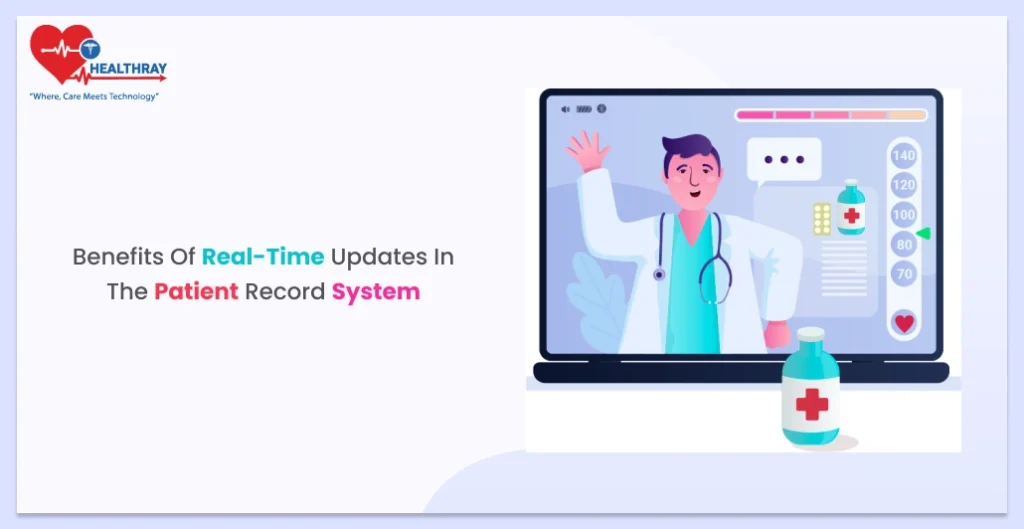
The computer-based patient record maintains real-time patient records for enhancing patient safety and assimilating clinical data in an organized manner for simplifying the process of data retrieval. Electronic medical record systems have many benefits. Mainly, it provides real-time patient information which has countless advantages such as :
Improved patient safety :
Patient safety is the ultimate goal of every health care organization and is important for enhancing patient satisfaction. There are three pillars of patient safety such as providing medical insights, regular communication with physicians, and improving health care activities. Let’s delve into the advantages of patient safety :
- Increasing hospital revenue
- Maintain precise and updated information
- Quick share documents among healthcare professionals
- Empowering patients to take preventive measures
- Optimistic behavior towards health care organizations.
Effective treatment plans :
Patient record system assimilates the vast amount of clinical data and patient information. After that, enter information in a legalized format, store data in cloud-based systems, and organize data for ease in data retrieval. Lastly, generating insightful medical reports that depict only necessary information and automatically removes unnecessary ones. Here are some of the benefits of an effective treatment plan :
- Improving patient outcomes
- Reduces hospital expenses
- Enhanced patient quality of care.
- Reduces future healthcare risks.
- Better allocation of medical resources.
Maintaining accurate patient data :
- Managing patient data is an important as well as challenging task for hospitals. With Healthray’s electronic medical records, it is simplified to assimilate and keep records up-to-date.
- The patient record system streamlines the patient’s process as it incorporates some good medical practices such as maintaining patient identification information, personal health records, and prescription records.
- Necessary to incorporate electronic medical records for good medical practices and to effectively manage patient records. Consequently, helps in centralizing medical information and removing redundancy.
Medication discovery :
- Medication discovery is a lengthy and time-consuming process. It requires real-time patient information to understand prevalent diseases.
- Behind any medication discovery, involves extensive efforts and in-depth medical research. After EHR implementation, it makes the tasks easy to research patient records.
- Electronic health records help in precise medical research, lower the chances of side effects, and aid in fast patient recovery.
Better data analysis :
Better data analysis depends on various factors such as precise data collection without redundancy, presenting data in a structured format, and combining all health data in a unified platform. Lastly, generating concise medical visual reports for better analysis of patient disease.
Thus, health care information technology has immense capabilities to maintain entire hospitals and improve the efficiency of all medical departments.
Lowers Operational Burden :
The patient record system manages different types of departments such as the clinical department, operational department, financial department, accountancy department, and taxation department. Moreover, there are other departments as well such as the in-patient department, out-patient department, patient record department, and patient query department.
Furthermore, handling these departments with an electronic system is no longer a dream, it is possible through an electronic medical record system. Consequently, it saves an extensive amount of paper, reduces the need for stationary stuff, and lowers staff efforts.
Conclusion
In this fast-paced technology, health care providers need to embrace the patient record system to maintain hospital data and real-time patient information. Computerized provider order entry records patient data in digital form with a structured format and aids in providing visualization of medical reports. Therefore, it has various benefits such as increasing patient safety, maintaining accuracy in patient data, aiding in medication development, and better data analysis. Thus, supports medical predictive analysis and reduces health system costs.
